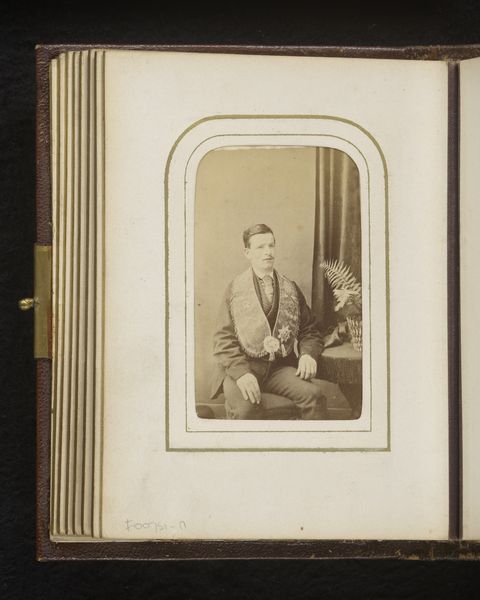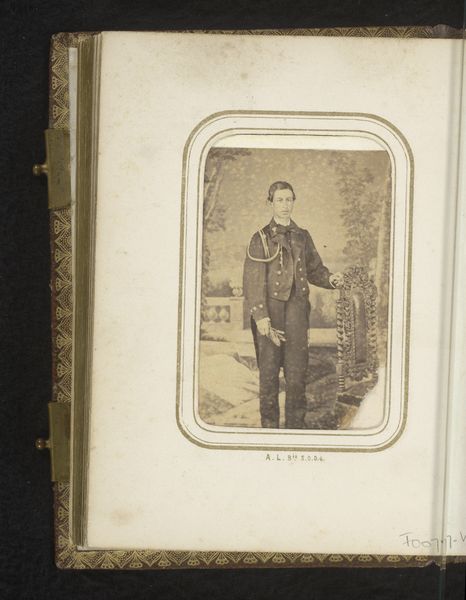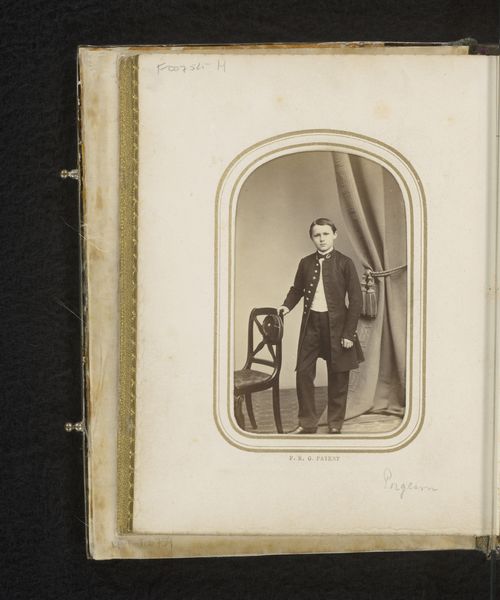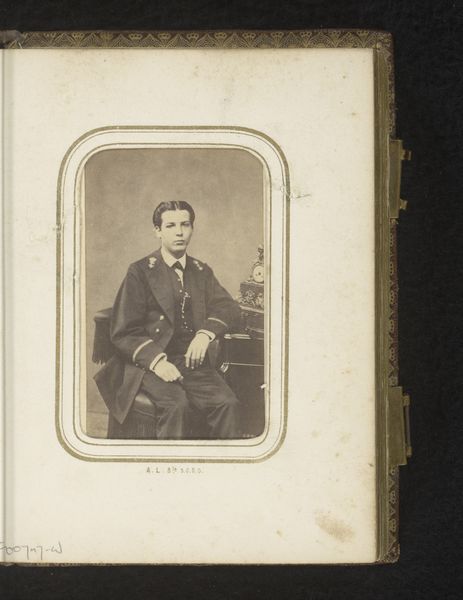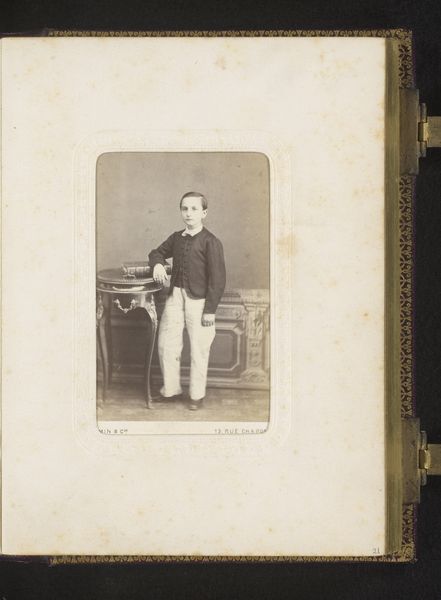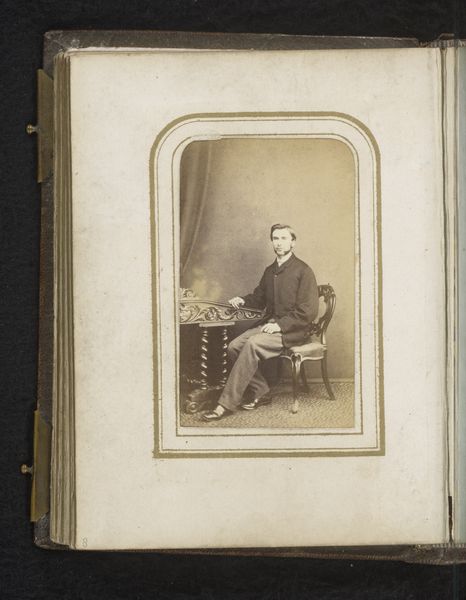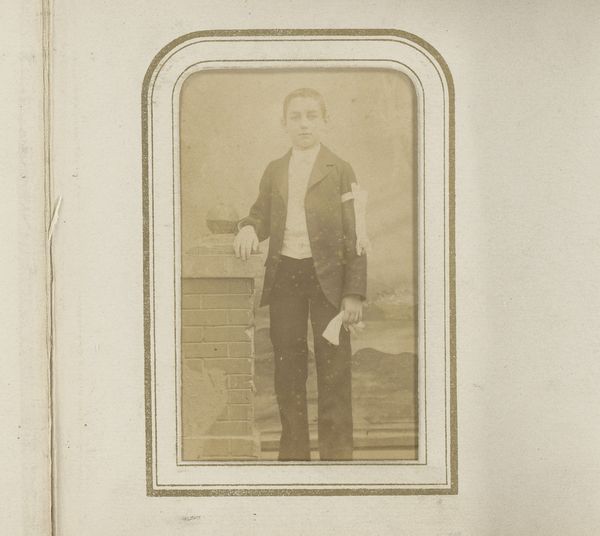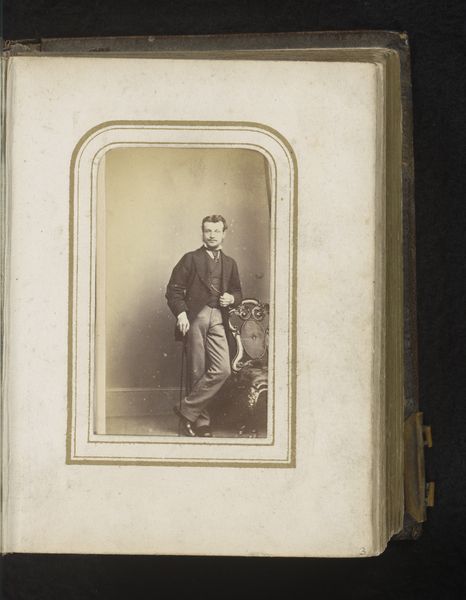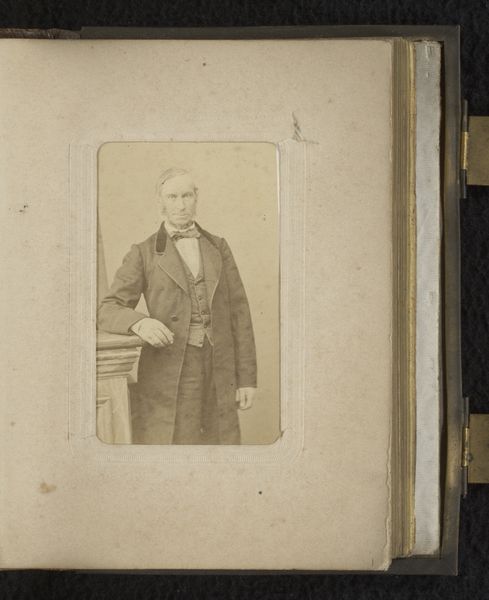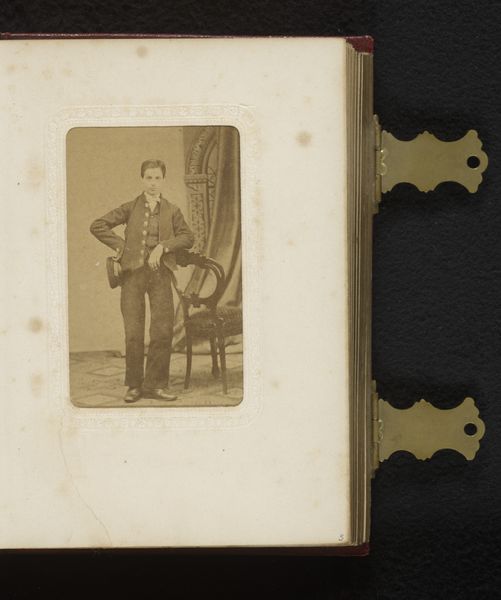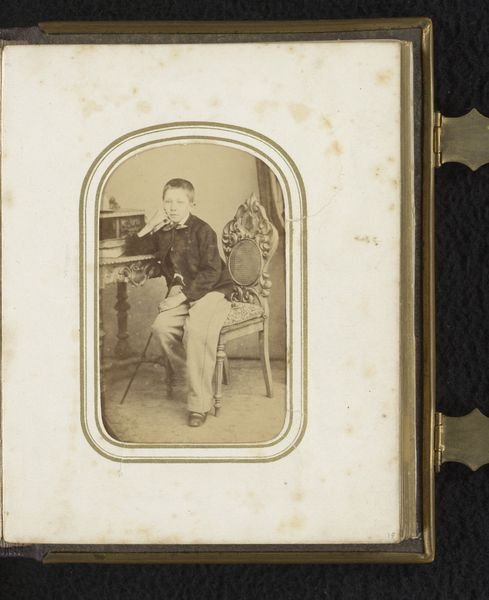
photography, gelatin-silver-print
#
portrait
#
book
#
photography
#
gelatin-silver-print
#
watercolor
#
realism
Dimensions: height 82 mm, width 50 mm
Copyright: Rijks Museum: Open Domain
Editor: Here we have "Portret van een zittende man met boek, aangeduid als Van Hasselt" – or, Portrait of a Seated Man with Book, identified as Van Hasselt – created sometime between 1860 and 1893 by Dirk van Lokhorst. It's a gelatin-silver print and gives me a sense of quiet dignity. What's your perspective on this image? Curator: Consider the labor involved in creating such an image at that time. The subject, most likely from a privileged background, had the resources for a photographic portrait. How much did the materials to create the silver gelatin print cost? Think about the time for developing and printing in the darkroom? Photography offered a new way to record likeness, but the means of production still dictated who could participate. How does knowing this influence our appreciation? Editor: That's a really interesting point. I hadn't thought about the financial accessibility of photography at the time. I suppose I was just viewing it through a purely aesthetic lens. Curator: The 'watercolor' tag raises questions too. Could this indicate hand-coloring was applied post-production, adding another layer of artisanal labor? This bridges the gap between mass reproduction and unique craftsmanship. What does that tell us about the contemporary artistic values, and our perception of value today? Editor: It seems that the labor involved impacts its meaning significantly. Thanks, that really shifted my understanding. Curator: Exactly, examining the materiality reveals the embedded social and economic contexts of art production. This applies as much to contemporary artworks as to historical examples.
Comments
No comments
Be the first to comment and join the conversation on the ultimate creative platform.


